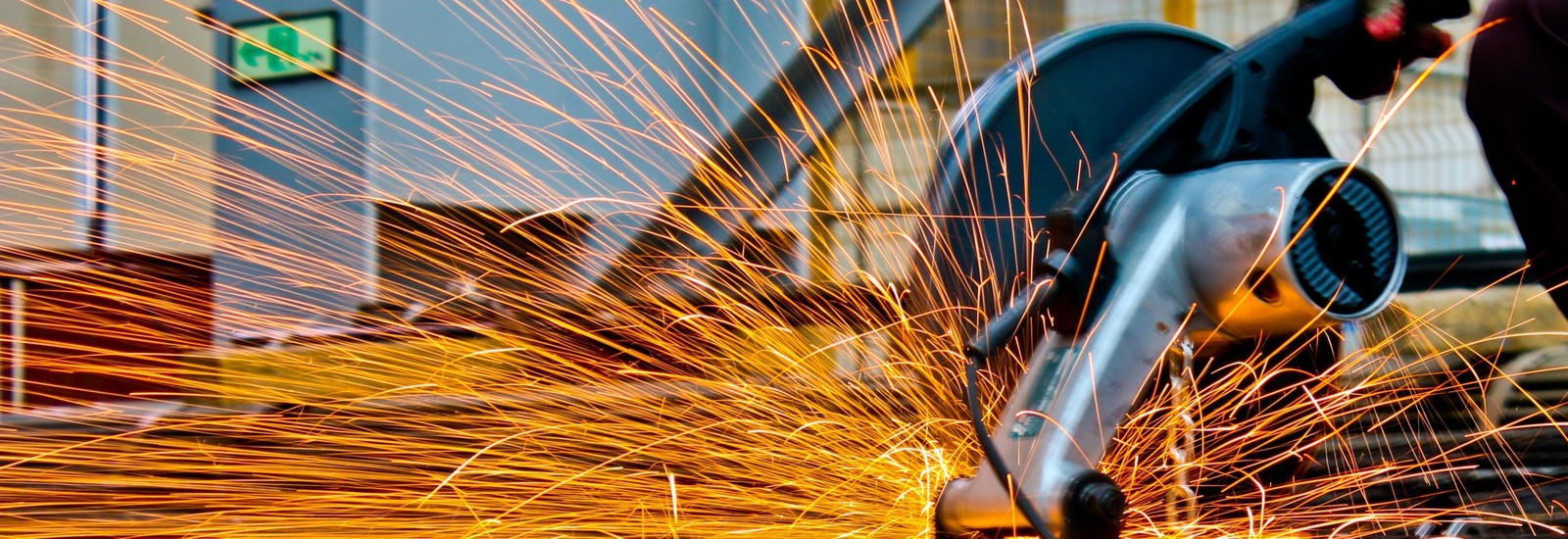Industrial waste
Production waste generated in manufacturing industries. Wastes from energy supply and mining and quarrying are also sometimes regarded as industrial waste.
Industrial waste can be defined as waste generated in the industries, and sometimes the energy production and mining of minerals is also included. In 2019, 8,738,000 tonnes of waste were generated in industry (including mineral products). The most significant industry was the manufacturing, printing and reproduction of paper, and paper and cardboard products, which generated 3 174 000 tonnes of waste. Other major producers of waste included the manufacture of coke, petroleum products and chemicals, which produced 1 806 000 tonnes of waste, and the processing of metals and the manufacture of metal products, which produced 1 745 000 tonnes of waste. In addition, other industries include the manufacture of food, beverages and tobacco products (614 000 tonnes of waste); manufacture of sawn timber and wood products (967 000 tonnes of waste); and the manufacture of non-metallic minerals (432 000 tonnes of waste).
Reception and treatment of industrial waste
L&T recycles and utilizes industrial side streams and uses them as building materials instead of virgin materials. In addition, from suitable waste fractions, L&T makes raw material for industry and fuel for power plants. Useful materials are e.g. ashes, slag, sludges, demolition waste, concrete and bricks, various sand materials; and other industrial process waste. L&T also receives, processes and utilises contaminated soil, most of which is diverted to land construction, e.g. in waste facilities and landfill structures. L&T helps industrial enterprises to process their side streams. In the coming years, L&T aims to further improve its industrial side stream processing capacity and services.
Fortum, for example, offers the treatment and utilisation of industrial waste. The sorting of the industrial waste in the place of its origin helps to save both costs and the environment. In the treatment of waste fractions, Fortum uses sorting, separation, solidification, stabilization and negative pressure treatment. Fortum uses a large part of the materials in its own structures in its own centres or delivers them for use in other sites. Waste fractions from the energy production and industry which are suitable for recovery include bottom and flight ash from power plants; tailings, steel grit and blasting sands; foundry sands and dust; various sludges and dredging masses; fibre clay and sludges; and various coarse crushed stone.
Since 2008, in Kuopio has located the Industrial Waste Centre with material recycling and treatment operations. The reception capacity of the Industrial Waste Centre is 70,000 tonnes of material per year, but it is estimated that the capacity is not sufficient to meet the needs of growing recycling targets. In order to promote the circular economy, the need and quantity for intermediate storage and treatment of conventional waste to be received must be increased. Therefore the extension of the operation of this Industrial Waste Centre to meet these needs is considered. In this case, the maximum reception volume could be increased up to 150,000 t/a or up to 300,000 t/a.
Example of the recovery of industrial waste
In 2016–2023, Ramboll tests the use of industrial-born recycled materials in land construction. The aim of the road building is to promote the utilisation of surplus soil and to reduce the transport of building materials. The project tests the suitability of different materials for different types of road structures.
Sources:
Circwaste (2018). Teollisuusjätteet ja maa-ainekset hyötykäyttöön tierakentamisessa. Haettu 22.11.2021 osoitteesta: < https://www.materiaalitkiertoon.fi/fi-FI/Circwaste/Osahankkeet_alueittain/LounaisSuomi/Teollisuusjatteet_ja_maaainekset_hyotyka(48164) > (Sivu päivitetty 15.6.2021)
Fortum (n.d.). Kuopion Sorsasalon teollisuusjätekeskuksen laajentamishanke. Haettu 22.11.2021 osoitteesta: < https://www.fortum.fi/yrityksille-ja-yhteisoille/kierratys-ja-jatepalvelut/recycling-waste-yhteystiedot-ja-toimipaikat/sorsasalo >
Fortum (n.d.). Teollisuusjätteiden vastaanotto ja käsittely. Haettu 22.11.2021 osoitteesta: < https://www.fortum.com/products-and-services/recycling-waste/environmental-construction-services >
L&T (n.d.). Teollisuuden sivuvirtojen ja jätteiden hyötykäyttö. Haettu 22.11.2021 osoitteesta: < https://www.lt.fi/fi/yritysasiakkaat/palvelut/ymparistorakentaminen/teollisuuden-sivutuotteiden-ja-jatteiden-hyotykaytto >
Suomen virallinen tilasto (SVT): Jätetilasto [verkkojulkaisu]. ISSN=1798-3339. Helsinki: Tilastokeskus [viitattu: 22.11.2021]. Saantitapa: http://www.stat.fi/til/jate/index.html
ELY-keskus (2019). Lausunto. Yhteysviranomaisen lausunto Fortum Waste Solutions Oy:n Kuopion Sorsasalon teollisuusjätekeskuksen laajennushankkeen ympäristövaikutusten arviointiohjelmasta (YVA-ohjelma). Haettu 22.11.2021 osoitteesta: < https://www.ymparisto.fi/sorsasalonjatekeskusYVA >
Fortum (n.d.). Teollisuuden jätteet hyötykäyttöön. Haettu 22.11.2021 osoitteesta: < https://www.fortum.fi/yrityksille-ja-yhteisoille/kierratys-ja-jatepalvelut/ymparistorakentaminen/teollisuuden-jatteet-hyotykayttoon > Tilastokeskus. Haettu 22.11.2021 osoitteesta: < https://www.stat.fi/meta/kas/teollisuusjate.html >

